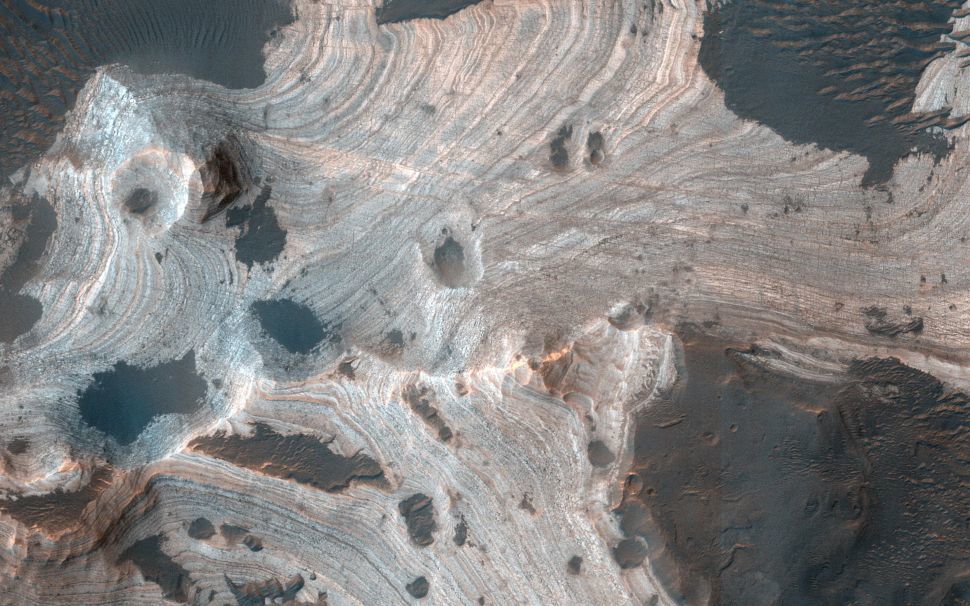There is no physical cache container to find; to log this earthcache, you will need to email or message us the answers to the questions below. The questions are repeated in the unencrypted hint for your convenience.
Cell phone cachers may want to save this to an offline list, as there may be limited to no service at the site. This site is sometimes subject to closure for fire danger. Please respect signs, and if it's closed, don't risk a federal criminal trespass ticket!
As you look up at the rock face, it's easy to spot the streaming marks of desert varnish, forming red streaks across the white and orange layers of rock. Scientifically, we know how the layers of rock formed and how the varnish appeared, but for a moment, we'll turn to local legend for a more colorful version of events.
THE LEGEND OF ECHO AMPHITHEATER
In the 1800s, Army forts dotted the landscape of the Southwest to protect settlers against American Indian attacks. However, when the Civil War broke out in 1861, fighting back east took priority over desert patrols, and settlers in the area were suddenly without protection. Legend has it that a group of Indians captured local settler families, took them to the top of the amphitheater, and killed them, staining the rock with their blood. Later, when troops returned to the area and forced the Navajo to relocate during the "Long Walk," ten men were killed atop the amphitheater in retaliation, further staining the rock surface.
OK - none of that is true, but it makes for a nice campfire story. So how did these cliffs form, how did the amphitheater form out of the cliffs, and how was the rock actually stained?
FORMING THE ROCKS
The cliffs from which Echo Amphitheater formed are made of three different formations of sedimentary rock, and there is a fourth layer in the slopes above the sheer cliff face. Going from the bottom (oldest) to the top (youngest):
Chinle Formation
The bottom visible layer around Echo Amphitheater is the Chinle Formation. Based on current scientific theory, this layer was deposited around 200 million years ago, during the Late Triassic. This layer is a mix of siltstones, and sandstones. As with the Entrada Formation, this layer of sedimentary rock is found in other locations around the Four Corners region, such as at Petrified Forest National Park. The content and makeup of the Chinle Formation can vary greatly from place to place; here at Echo Amphitheater, the colors of the Agua Zarca Sandstone in the Chinle Formation are not much different from the Entrada Sandstone, whereas at Petrified Forest National Park, the Chinle Formation is responsible for the variety of colors that gave the Painted Desert its name. Fossils are often found in the Chinle Formation.
Entrada Formation
The next layer up, approximately 200 feet thick, is Entrada Sandstone, formed during the Middle Jurassic, up to 20 million years before Lake Todilto deposited the Todilto Formation. The layer is essentially made up of compacted, fossilized sand dunes. The dunes covered a large area; this same sandstone can be found in rock formations around the Four Corners region, such as Arches National Park (the top layer of Delicate Arch is made of Entrada Sandstone). Little to no fossilized remains are found in this stone layer. The Entrada Formation starts with a thick orange layer, then a thin white one, then a thick yellow one.
Todilto Formation
Scientists believe the next layer up was formed around 170 million years ago, during the Middle Jurassic. This area was covered by a huge, salty lake; over time, sediments at the bottom of the lake formed limestone and, as the lake dried out, a thick layer of gypsum was left behind. This formation can be found up to 75 meters thick, though it is thinner here at Echo Amphitheater. The fossilized remains of the former inhabitants of the lake can be found in this limestone-gypsum layer.
Summerville Formation
The top layer, above the cliffs, was formed around 155 million years ago, also during the Middle Jurassic. It's a mix of caliche, sandstone, siltstone, and mudstone. Here, this layer forms slopes, not cliffs. The Summerville Formation contains fossils and, in some places, preserved dinosaur tracks.
STAINING THE ROCKS
Despite the legend, the desert varnish you see on the walls is not blood, but for years, scientists assumed that it was made by minerals leaching out of the underlying rocks. It was not until the 21st century that scientists discovered it was a paper-thin deposit of clays, made by blowing dust. This discovery was made only after varnish was detected on rock surfaces that could not have contained the manganese oxide or iron oxide minerals that make up desert varnish, such as quartz. Desert varnish builds up slowly on rock surfaces, commonly in areas where water flows intermittently over rock surfaces. Ancient Indians created petroglyph drawings by chipping away the varnished layers of rock, exposing lighter rock underneath. Similarly, we can tell when rock has weathered away by looking for areas where rock varnish is absent.
WEATHERING THE ROCKS
The amphitheater formed through thousands of years of weathering by wind and water and temperature, in a process called alcove weathering. Similar processes formed alcoves around the Southwest, which were used by native people for shelter. As water seeps into cracks, it freezes and expands, slowly widening cracks and pushing rock apart. As chunks of rock break off, alcoves are created. Additionally, as water comes in contact with sandstone, it dissolves the calcium carbonate that cements the sandstone together. Eventually, the stone can crumble back into sand; as the wind and water carry the sand away, it can further abrade and weather away the rock surface.
ECHO AMPHITHEATER ON MARS?
Scientists have known for years that Mars has sedimentary rock formations similar to the ones you see here. In 2000, Mars Global Surveyor images revealed rock formations that most likely formed from sediment at the bottom of lakes or shallow seas. While sedimentary formations can form without water, the layers of sediment are so thick and uniform that it is highly unlikely they formed another way, say, from the accumulation of wind-borne particles.

More recently, in the summer of 2020, using photos from the Mars Reconnaisance Orbiter, scientists identified stacks of colorful sedimentary layers inside Holden Crater, an 87-mile-wide impact crater that has been considered as a landing site for multiple probes. As pictured above, the formations are distinct in color, just like those in front of you.
LOGGING THIS EARTHCACHE
To log this earthcache, send us a message using this link with the answer to the questions below, or send us an email through the link in our profile, copying and pasting the questions below with your answers. There is no need to wait for a response before logging your find.
1. The name of this earthcache: Planetary Geology on Earth (Echo Amphitheater)
2. Describe the colors and textures of the layers of rock that you see in the cliff face. Can you tell the rock formation layers apart? How are they different?
3. What if any evidence of weathering do you see on the cliff face? (HINT: on the cliff, not at the bottom. The description above gives you something to look for.)
4. Add a photo of yourself or a personal item such as GPSr to your log.
SOURCES
"Lake Todilto," New Mexico Museum of Natural History and Science (resource no longer available online)
"Entrada Sandstone," University of Utah
"Entrada Sandstone," Wikipedia
"Chinle Formation," University of Utah
"Chinle Formation and Related Upper Triassic Strata, Colorado Plateau Region." US Geologic Survey
"Chinle Formation," Wikipedia
"Cañon Retumbido or Echo Amphitheater." Four Corners Region Geotourism Guide
"Geologic Map of the Abiquiu Quadrangle, Rio Arriba County, New Mexico." Florian Maldonado, US Geologic Survey
"Desert varnish." R.I. Dorn, Encyclopedia of Geomorphology, 251-254
"Geology of Mesa Verde." National Park Service
"Sedimentary Mars," NASA
"Mars rock layers swirl in gorgeous crater photo," Space.com
